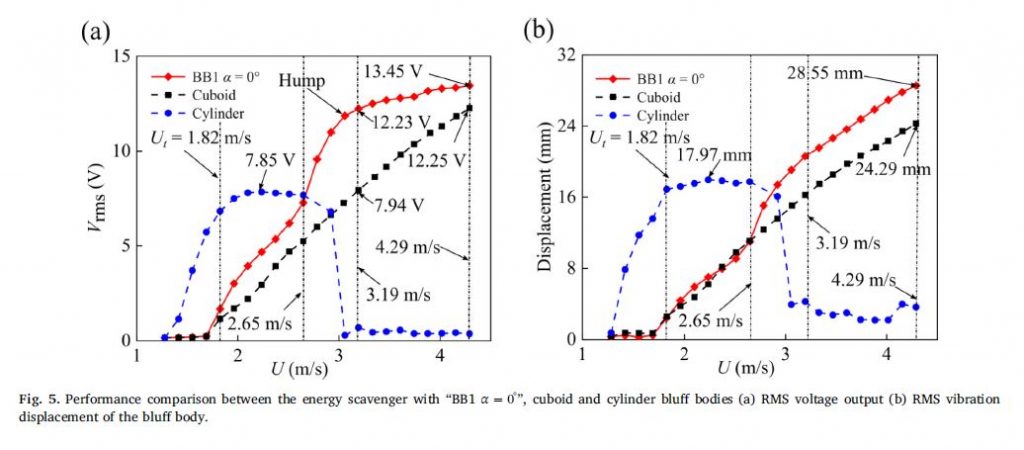Abstract:
This paper presents a hybrid piezoelectric wind energy scavenger with different cross-sectioned bluff bodies, to enhance the energy scavenging performance by coupling both the vortex-induced vibrations (VIV) and galloping phenomena. Theoretical, experimental and computational fluid dynamics (CFD) studies are conducted to investigate the energy scavenger performance with three combinations of the circular and square cross-sections corresponding to the different values of an attack angle. Both theoretical analysis and experimental results reveal that the aerodynamic coefficients (Strouhal number and galloping force coefficients) play key roles in the energy scavenging characteristics. Aerodynamic coefficients for the distinct bluff-body cross-sections and attack angles can significantly affect the energy scavenger performance. Experimental results show that compared to the conventional galloping-based energy scavenger and VIV-based energy scavenger, the piezoelectric wind energy
scavenger with an appropriate cross-sectioned bluff body for an appropriate attack angle can bring together the advantages of both VIV and galloping. These benefits can lead to significant performance improvement for a wide range of wind speeds (e.g. up to 71% improvement of the maximum voltage output). Afterward, CFD studies of the vortex shedding mechanism around the bluff body are performed to interpret the observed performance improvement. The CFD studies corroborate that the appropriately designed cross-section and selected
attack angles of the bluff body improve the nearby airflow feature, which strengthens the vibration of the piezoelectric wind energy scavenger, leading to the energy scavenging enhancement

.
Authors: Junlei Wanga, Shanghao Gua, Chengyun Zhanga, Guobiao Hub, Geng Chenb, Kai Yangc, Hang Lia, Yuyang Laid, Grzegorz Litak, Daniil Yurchenkof
This paper was published in Energy Conversion and Management 213 (2020) 112835
To read full text, please visit publisher site or download pdf file.